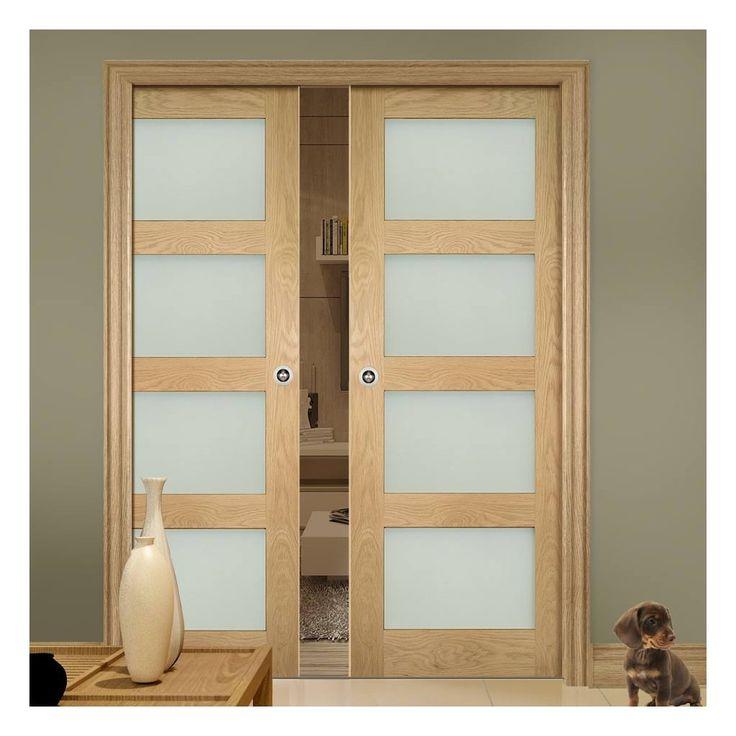Double Pocket Doors vs. Swing Doors: Which Works Better for Tight Spaces?

When planning a room layout, one of the most overlooked yet impactful design choices is the type of door you install. Doors do more than simply provide privacy; they influence traffic flow, available floor space, and even the overall aesthetic of your home. Two popular choices—double pocket doors and traditional swing doors—offer very different benefits and drawbacks, especially when working with tight spaces. In this article, we’ll compare the two so you can make an informed decision for your home.
Understanding the Basics
Before we compare them, let’s quickly clarify what each option entails.
Swing doors are the classic hinged doors most of us are familiar with. They open either inward or outward, requiring clear space for their swing arc. While they’re simple, functional, and widely available, they can be less than ideal in smaller rooms.
Double pocket doors slide in wall cavities on both sides of an entry. Instead of swinging open, the doors are inclined to fully disappear inside the wall, so no floor space is lost. They are mostly installed in dining rooms, living rooms, or master suites to keep passage larger and open, without any doors obstructing the way on sight.
Space-Saving Potential
When space is at a premium, the biggest consideration is how much room a door requires to operate.
Swing Doors:
A standard swing door can require up to 10 square feet of floor clearance just to open and close comfortably. In a tight bedroom, narrow hallway, or small home office, that’s valuable space you could be using for furniture or free movement.
Double Pocket Doors:
Because they glide into the wall, double pocket doors require no swing clearance at all. This means you can place furniture, storage units, or décor right up against the opening without worrying about blocking the door. For small rooms or open-plan designs, this is a clear advantage.
Verdict: For tight spaces, double pocket doors win hands-down when it comes to saving usable square footage.
Aesthetic and Design Flexibility
Swing Doors:
Swing doors come in endless styles, from solid wood panels to glass-paneled designs, making them easy to match with almost any interior style. However, their presence is more pronounced—they always occupy a visible spot in the room, whether open or closed.
Double Pocket Doors:
Double pocket doors offer a sleeker look, especially when closed, because they integrate into the wall. When open, they create a clean, unobstructed passage between rooms. This can be ideal if you want a seamless flow or an airy feel. Additionally, you can customize them with different materials, glass inserts, or even bold colors to complement your home’s décor.
Verdict: While swing doors provide classic charm, double pocket doors offer a more modern and integrated design that works well in contemporary and minimalist spaces.
Installation and Structural Considerations
Swing Doors:
Installing a swing door is normally pretty easy to do and inexpensive enough. To keep in mind, you'll want to have adequate wall clearance for the arc resulting from the swinging action. Except for this, a swing door needs no structural alteration whatsoever.
Double Pocket Doors:
Installing double pocket doors is more complex, especially if you’re retrofitting them into an existing wall. The wall must be wide enough to house the door cavities, and it cannot contain load-bearing studs, plumbing, or electrical wiring in the areas where the doors will slide. This can add to the installation cost and planning time.
Verdict: If you want a quick, budget-friendly installation, swing doors are the simpler choice. For a long-term upgrade in a space-conscious home, double pocket doors are worth the extra effort.
Functionality and Accessibility
Swing Doors:
Swing doors are easy to operate for all ages and abilities. However, in narrow hallways or small rooms, they can get in the way, making maneuvering difficult—especially for people with mobility aids like walkers or wheelchairs.
Double Pocket Doors:
Because they slide into the wall, double pocket doors are excellent for accessibility. They eliminate the swing arc obstacle, making them a good choice for homes designed with universal design principles in mind.
Verdict: For accessibility and ease of movement in tight spaces, double pocket doors have a clear edge.
Maintenance and Longevity
Swing Doors:
Swing doors have fewer moving parts, which makes them easier to maintain. Hinges may squeak over time, but repairs are usually simple.
Double Pocket Doors:
Pocket door tracks and rollers can wear out with heavy use, and because the mechanism is hidden inside the wall, repairs can be more involved. That said, quality hardware and professional installation can minimize long-term issues.
Verdict: Swing doors have the maintenance advantage, but well-installed double pocket doors can last just as long with proper care.
Cost Comparison
Swing doors are generally more affordable to purchase and install, making them appealing for quick remodels or budget-conscious projects. Double pocket doors, due to their structural requirements, can cost more upfront—especially in renovations. However, in homes where space is valuable, they can be worth the investment for the added functionality and style.
Which Should You Choose for Tight Spaces?
If your main priority is maximizing every inch of your floor plan, double pocket doors are the better option. They eliminate the swing clearance issue, create a wider opening, and offer a modern, streamlined appearance. They’re especially useful in small bedrooms, shared spaces, or open-plan living areas where you want flexible boundaries.
Swing doors, however, remain a timeless and practical choice for spaces where clearance isn’t a concern and budget or ease of installation is a priority.
Final Thoughts
Both double pocket doors and swing doors have their place in home design. The right choice depends on your specific needs, budget, and the space you’re working with. For tight spaces, double pocket doors generally deliver the biggest functional benefit, while swing doors offer simplicity and tradition.
If you’re ready to make a decision, consider the size of your room, your design goals, and your willingness to invest in a more involved installation process. In the end, choosing the right door type can significantly enhance both the look and usability of your home.
Catégories
Lire la suite
Modern life often leaves little room for mindful mealtime habits. Many people eat in a hurry, jump back into work right after meals, or rely on antacids and pills to manage digestive discomfort. But nature offers a more balanced approach. One of the simplest and most effective natural tools for improving digestion is digestive tea—a soothing herbal infusion that supports the body’s...

ถ้าพูดถึงความพรีเมียมในวงการบุหรี่ไฟฟ้า ชื่อ relx artisan ต้องโผล่มาในลิสต์อย่างไม่ต้องสงสัย เพราะนี่คือไลน์ผลิตภัณฑ์ที่ผสมผสานงานออกแบบระดับหรูเข้ากับเทคโนโลยีสูบที่นุ่มละมุน บอกเลยว่าทั้งสายแฟชั่นและสายควันต้องกดไลก์รัวๆ Relx Artisan – ความหรูที่จับต้องได้ Relx Artisan โดดเด่นด้วยดีไซน์ที่เน้นความพรีเมียม วัสดุแข็งแรง พื้นผิวสัมผัสหรูหรา ทำให้รู้สึกว่าไม่ได้ถือแค่บุหรี่ไฟฟ้า...

Beekeeping in winter is a delicate balance between helping your bees survive and avoiding unintentional harm. One of the most common challenges beekeepers face during cold months is providing food without creating excessive moisture inside the hive. While bees need consistent nutrition when forage is scarce, moisture buildup can be deadly to colonies. Managing this balance requires preparation,...

For sports fans in Thailand, Football Betting has become more than just a hobby—it’s a thrilling way to engage with football, test prediction skills, and enjoy potential rewards. Online platforms have made it easier than ever to access global football leagues, check live odds, and explore a variety of betting markets from the comfort of home. Whether you are a beginner or an...

Executive Summary North America Hangers Market : The North America hangers market is expected to gain significant growth in the forecast period of 2023 to 2030. Data Bridge Market Research analyses that the market is growing with a CAGR of 4.5% in the forecast period of 2023 to 2030 and is expected to reach USD 791,603.18 thousand by 2030. Market definition covered in the large scale...




